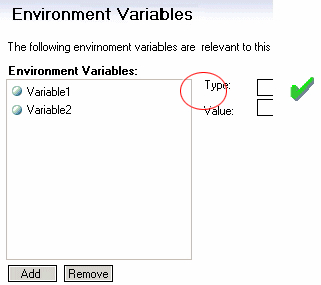

- How to use eclipse c++ how to#
- How to use eclipse c++ manual#
- How to use eclipse c++ code#
- How to use eclipse c++ series#
Check the 3rd Party Tools sections for details on how to install the toolchains and the other tools.
How to use eclipse c++ series#
The Eclipse plug-ins use a series of external tools, available from the separate xPack Project.
provides advanced toolchain path management. provides fully configurable toolchain definitions. provides common options for all toolchains.  supports the automatic discovery of system paths and macro definitions for accurate indexing and auto-completion. provides extra build steps to generate the binary files required to write the controller flash memory. supports a wide range of 32 and 64-bit toolchains. Other features of the cross build plug-in are: provide a special view to examine and modify peripheral registers during debug sessions. provide ready to run templates for some Arm Cortex-M processors. without having to manually create and maintain makefiles create/build/manage embedded Arm/RISC-V applications, using the managed project features of Eclipse CDT, i.e. This information was directly taken from and Eclipse Embedded CDT (C/C++ Development Tools, formerly GNU MCU/ARM Eclipse) plug-ins allow to create, build, debug and in general to manage Arm & RISC-V projects (executables and static/shared libraries, in both 32 and 64-bit versions) with the Eclipse IDE. usr/local/bin) Go to Preferences > LLVM and enter 'usr/local/' in LLVM installation. Click on 'Edit' and enter the path to the clang installation into the 'Value'-Field (i.e.
supports the automatic discovery of system paths and macro definitions for accurate indexing and auto-completion. provides extra build steps to generate the binary files required to write the controller flash memory. supports a wide range of 32 and 64-bit toolchains. Other features of the cross build plug-in are: provide a special view to examine and modify peripheral registers during debug sessions. provide ready to run templates for some Arm Cortex-M processors. without having to manually create and maintain makefiles create/build/manage embedded Arm/RISC-V applications, using the managed project features of Eclipse CDT, i.e. This information was directly taken from and Eclipse Embedded CDT (C/C++ Development Tools, formerly GNU MCU/ARM Eclipse) plug-ins allow to create, build, debug and in general to manage Arm & RISC-V projects (executables and static/shared libraries, in both 32 and 64-bit versions) with the Eclipse IDE. usr/local/bin) Go to Preferences > LLVM and enter 'usr/local/' in LLVM installation. Click on 'Edit' and enter the path to the clang installation into the 'Value'-Field (i.e. 
Click on the box next to the PATH variable and 'OK'.
How to use eclipse c++ code#
Edit your source code files, and repeat Go into Eclipse preferences > C/C++ > Build > Environment and click 'Select'. Build with the Project > Build Project command. Select the configuration to build (Release of Debug) with the Project > Build Configurations > Set Active command. Now, build the project the usual way with Eclipse: However, I cannot tell you exactly what the threshold for minor edits is. For example: rm -r Release/* and repeat.Īctually, for minor edits to your CMakeLists.txt control files, you need not delete the build directory. Delete the contents of the corresponding build directory. If necessary, edit your CMakeLists.txt control files. In the Make Targets window, double click on CMake Release or CMake Debug to generate the GNU Make build system in Release/ or Debug/, respectively. Use CMake to generate an out-of-source GNU Make build system: Set all values exactly the same as the Release configuration. Select Clean and specify the target name clean. Select Build (Incremental build) and specify the target name all. The variable $ĭeselect Generate Makefiles automatically Next, you must define the project name and location. I know this is not the correct place for this one, but it is just a small trick. In the project wizard, select Arduino Project, and, in the next window, select Arduino C++ Sketch. How to use eclipse c++ manual#
I will explain here two types: the recommended method and the manual method. The main reference site for this is the CMake WikiSite. It was not easy to create a project which works with CMake (I want my programs to be as cross-platform as possible, so this was a requirement). Now, I'm starting to work with Eclipse (since is one of the most used environments for many many different programming languages). and make directly from the terminal or modifying a little bit the Geany configuration. Actually, I always programmed in Geany which is the most simple IDE and I run cmake.
Accessing the Source and Advanced Editing Features.







 0 kommentar(er)
0 kommentar(er)
